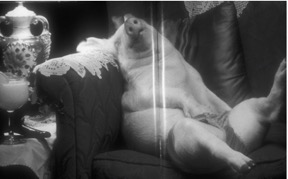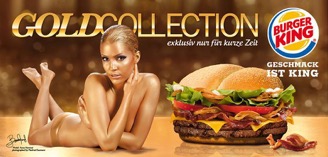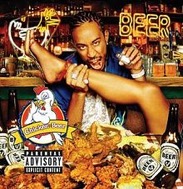Piedmont Products and Industries Dairy Beef
Although full beefiness consumption in the U.S. has been dropping in the contempo years, the value of US. Cattle and calf production has been increasing rapidly, from 37 billion dollars in 2010 to sixty billion dollars in 2015, co-ordinate to the United States Department of Agriculture Economical Inquiry Service (2017). This increment in meat value is plausibly afflicted by the meat industry'due south hard effort in advertizement. It is reasonable to look successful advertisements to increase demand for meat and hence, if i changes the method in advertizement, it tin result in changes in revenues and vice versa (Hyde & Foster, 2003). Thus information technology is safe to say that, like whatever other products, the need for meat is non genuine, but rather "manufactured" by the producers. Every bit Zaraska (2016) writes, "increasing meat consumption around the globe, the U.S. included, is not need driven but supply driven: it's pushed more than by the actions of the meat industry and not so much by the desires of our buds."
Hegemonic masculinity, divers as "the dominant class of masculinity within the gender hierarch," is a term first coined by an Australian Sociologist R. W. Connell (Encyclo, "Hegemonic masculinity"). Connell divided masculinity as 3 different types; Hegemonic, Subordinate, and Complicit masculinity, and hegemonic masculinity includes qualities like heterosexuality, whiteness, physical force, suppression of emotions, machoism, etc., and is culturally valued the about. Equally an industry, meat markets take been worrying for the past few years due to the decrease in meat demand although it is a very modest amount. Because the meat industries perceive the recently increased movements and not-profits for ecology and animate being rights as threats to hegemonic masculinity they fear that this new atmosphere will lead to a more than rapid decrease in meat demand, which leads them to accept more active and even aggressive actions than before when it comes to reaching their consumer with their advertisements (Rogers, 2008). Meat has been e'er associated with men and masculinity (Adams, 1991), thus this perceived threat to hegemonic masculinity has made meat advertisers employ more sexist and misogynistic methods than ever before.
The objective of this research is to analyze how meat industries use advertisements to encourage carnism and increase meat demand, and thus resultantly rely on misogynistic images to practice and so. In this paper I will explore how meat industries represent carnism in their advertisements, the techniques they use to produce meat demand such as imitation information, the gender binary, and misogynistic images, and the style they normalize and naturalize eating meat by targeting children.
False Information Used to Increase Meat Demands
Even thought eating meat is the primary reason behind wellness issues similar cancer, heart illness, obesity, and diabetes ("Eating for Your Health," northward.d.), ecology pollution, desertification of the Amazon, world hunger, global h2o shortage then on, meat industries are one of the biggest industries in the globe that are willing to practice anything non to lose their profits in any manner. According to Zaraska (2016), "the annual sales of meat were worth 186 billion dollars in the U.S. alone in 2011, and Tyson, the largest meat corporation in the U.S. recently had a revenue of 34 billion dollars." She too writes about her meeting with Bill Roenigk, the senior vice president of National Chicken Council(NCC) on how meat industries piece of work to increment the meat demand:
As Neb Roenigk explained to me, … Meat demand is like a large canis familiaris, just sitting in that location, pretty immobile, just this canis familiaris also has a rather large tail. Good promotion and advertising is like grabbing this tail and wag-wag-wagging the domestic dog as hard as you can.
One of the most famous meat ad was the "Beef. It's What's for Dinner" slogan in 1992. The industry spent 42 meg dollars of beef checkout money to promote this slogan and this projection got and so pop that most Americans automatically answered "beefiness" when hearing the question "What'south for dinner?" (Zaskara, 2016).
"The texts of meat which nosotros assimilate into our lives include the expectation that people should eat animals and that meat is good for you." Adams says (1991, p. 26). Meat industries are too eager to boost their revenues that they are not even concerned almost spreading faux information to the consumers. Most of the bones knowledge we take on meat that nosotros believe is scientific is actually strategically made up by meat industries.
Wait at the 2 advertisements below. Both of them are advertisements in the 1940s to 1950s, from the American Meat Institute. In the fist picture meat is described as "nourishing", with the words "a consummate protein food" highlighted with boldface blazon. The 2d advert is purely made to testify how expert the meat is, non just for your appetite but also for your health. In the chart it has half-dozen kinds of meats that show: first-class, skillful or fair amounts of "consummate" protein, three types of B vitamins and iron. Overall these advertisements are suggesting that meat is actually nourishing and adept for your wellness. It may sound fair. However, the information on these advertisements is not entirely true.
Starting time of all, "complete protein" does not accept any practical meaning to it, and is just a myth that is based on British Imperialism. After the industrial revolution, Uk was able to increase the supply of food dramatically, especially meat. Until then meat was globally a very expensive and fancy dish that just rich people could take. In the need to boost the country'southward superiority British scientists came up with the idea of "complete protein," which means that only meat contains all the essential amino acids that are needed to build poly peptide. Then they advertised that but Britain could supply and then much meat and that "complete protein" was essentially needed for human health to their people. Thus for decades it has been believed that we cannot survive without meat mostly considering of this poly peptide myth, and some people fifty-fifty think that plants have no protein at all. Withal, although it is true that meat protein contains all essential amino acids, it does not mean that it is "essential" for us to consume meat in order to get protein. There was one time when it was believed that in order to get the full protein value from simply plants, one had to consume diverse and groovy quantities of vegetables and legumes together. According to the American Dietetic Association, now researchers suggest that equally long as one consumes just enough calorie value for their energy needs, poly peptide needs tin easily be met (As cited in "The Protein Myth", n.d.).
Secondly, vitamin B, vitamin B12 to be specific, is ane of the essential vitamins that no animal tin produce itself, which means that in order to get vitamin B all animals have to rely on institute consumption. In the past animals generally had more than vitamin B12 in their system than human being beings just because they ate much more plants than humans did. Nowadays the situation is different. Every bit the air, water, soil pollution has been aggravated, it is hard to get vitamin B12 even from the plants. It means that eating meat cannot do the same tricks anymore. Instead, taking vitamin substitutes or consuming seaweed, which is rich in vitamin B12, on a daily basis is a better option. However, the meat industries tend to ignore this and keep their myth of "nourishing meat" in their advertisements.
Gender Binary and Misogyny in Meat Advertisements
When thinking about advertisements and paradigm, it is not hard to have for an image which shows a family who went to camp in the woods, kids playing soccer while the female parent would prepare for dishes and the father would grill the meat. In her unprecedented volume The Sexual Politics of Meat: A Feminist-Vegetarian Disquisitional Theory (1991), Carol J. Adams thoroughly investigates how eating meat is strongly related to masculinity and misogyny. "Meat-eating societies gain male identification by their pick of food," she explains (p. 48). Men eating meat while women eat vegetables and dairy is quite frequently, but unconsciously, reproduced every bit a societal norm. We could easily recollect of a 19th century family in a state of war zone where a housewife prepares meat for her husband while she and her children tin can only consume rice and vegetables, and this is not a rare situation fifty-fifty today. In the 20th century when there was no sufficient corporeality of food for an entire family in Great Britain, in that location were cookbooks' menus proverb "For the man but," when referring to meat (Adams, 1991).
Kilbourne (1999) once said in her work Can't Buy My Beloved that women had always been closely linked with food. Information technology is very obvious that we have been closely linked with food, only mainly with vegetables, fruits and dairy products like cheese and ice cream. When we are represented equally meat, it is not because we are considered to eat meat on a daily footing only because we are supposed to be consumed like meat, by men. Symbolizing consuming meat poly peptide with male person activities and with degrading females has been a long-lasting theme, at least in western gild. It is very easy to discover in various pieces of literature examples of females being as degraded every bit any other things in nature which should be dominated by males, including the Bible in which the Fall of Man is entirely blamed on a female and an beast (Choi, 2011). More recent pieces of literature demonstrate this blatantly. In Looking for Normal , a play scenario past Jane Anderson, Wayne becomes impotent and says,
"You know maybe I simply oasis't been eating enough cherry-red meat. Maybe when I become downward for my visit I should hop over the farm and me and Gramps could go out and shoot ourselves a couple of deer. I'll chow downwards on some fresh-killed venison, that ought to restore my manhood" (p. 52).
In meat advertisement, misogynistic and sexist images prevail not just because using degrading images of women is common in advertising, just too because information technology is hard to disconnect meat with hegemonic masculinity. In The Sexual Politics of Meat, Adams (1991) shows some examples in the advertisements that are highly misogynistic and androcentric. In 1981, Playboar, a magazine self-titled as "the grunter farmer'due south Playboy," A pig named Ursula Hamdress appears. She is half-naked, with only bikini panties on a large chair posing sexually and seductively, almost like a woman in a pornography. Blow is Ursula appeared in The Magazine That Bites Back.
Rogers (2008) also shows another example of how meat advertisements show the fear of hegemonic masculinity being threatened and asks consumers to restore the power and dominance by eating their meat products:
He suddenly appears with a powered nail gun, wielding it above his caput similar a pistol, and violently attacks the furniture, yelling while ''assembling'' information technology in a cruel, unplanned style. The violent performance restores, in some sense, his hegemonic masculinity. He may non take demonstrated competency in his masculine task [which was assembling the furniture in a proper way], but he has dominated the piece of furniture. (p. 288)
This Del Taco's TV commercial named "Feed the Beast" is perfected by the narration in the stop that goes "Dude, if you're freaking out on the furniture, maybe it'due south a sign that y'all need to feed the beast… The new shredded beef combo burrito… Information technology's the only burrito bulky enough to feed the beast" with "the beast" representing males with hegemonic masculinity.
Meat Advertisements in Modern Days
More often than not we do not usually realize that fifty-fifty meat industries are using this gender bias in their advertisements. Accident is a recent Burger Male monarch ad in Federal republic of germany.

Burger King has been infamously known for its sexist advertisements. In this advertizement, named as "Gold collection" are a naked and seductive woman and a burger with 3 patties and salary. Why should there be a naked woman in this advertisement when it is about an "exclusive" burger? This clearly shows that advertisers see women every bit a product that can be "nerveless" and eventually consumed by men, both rhetorically and literally, as any other meat production. When comparing two images evidence upwards in this advertisement, it is not even crazy to deduct that information technology implies that the burger itself is made out of the woman. Burger King ad had a like theme in Singapore besides.

On the left is the very advertisement that has been globally controversial. In this ad, a young women's rima oris is open, with a seven-inch sandwich in forepart of her. Below the image the copy goes "It'll blow (highlighted with a bigger font) your mind away." This advertisement, which only ran in Singapore, is "one of the prime examples of how to alienate half of your market place and use them every bit sexual objects" (Johnston, 2014). The worst part of this advertisement is that the woman used in this ad is not a hired model. In a brusque video, the woman insists that she had some photo shoots with different emotions, but she was never asked for permission to use the photos, nor was she aware that the photograph was used for this offensive ad past Burger Male monarch (Johnston, 2014).

On the right side is an advertising for Le Cornichon, a restaurant in Paris. It features a woman's body with a goose head, dressed as a typical French mistress, with a very sexual posture. The copy goes "Goose leg confit with parsley," confit pregnant any type of nutrient that is cooked slowly to be preserved. Basically information technology is an advertisement for a goose leg meat dish. When looking closely, you tin find some parsley put on the goose's hat. The funny matter is that the only legs shown hither is those of human female'due south. In this advertisement, a adult female is amputated, absent and consumed as a product and a dish, preferably by men. Too this poise and elegant posture that this goose-woman is in conveys that women and animals actually enjoy their being conquered by men, degrading both women and animals. The danger of this assumption is well-explained in Sexual Politics of Meat. Adams (1991) insists that "To justify meat eating, nosotros refer to animals' wanting to die, desiring to go meat…. One of the mythologies of a rapist culture is that women not only inquire for rape; they also savor it; that they are continually seeking out the butcher's knife," only similar the animals are seen to be enjoying their presence in meat advertisements (p. 82).
Beneath is a Ludacris anthology cover, "Craven N Beer" released in 2003. This is not a commercial advertisement for meat, but it conspicuously conveys the similar message on how carnism is related to misogyny. On the front this picture, in that location are fried chicken meat and beer, representing the album title. "Chicken N Beer." Withal, the meat Ludacris is eating is not chicken, merely a female person'due south leg. In this anthology cover, just like the advertizing for Le Cornichon, a woman is amputated and consumed along with animals. The difference is that in this picture the consumer is obviously shown as a male. It is not difficult to conclude that this flick non only perpetuates and fantasizes male violence against women, but also in a way that implies human violence confronting animals.


On the left is another example. This is a part of a campaign for Rustler'south meat snacks, which was featured in mag The Drum. This "campaign" features a fictional "butcher's daughter" named Lexi O'Leary, who has her own Facebook account as "a dotterel sex toy fond of making naughty puns" (Megginson, 2012). In this ad there is a seductive woman who seems to be only wearing an frock sitting down on a chair, and behind her the copy says "Of grade my breasts are succulent. They are all Chicken." In this advertisement, a woman, or at least a part of a adult female's body, is once again compared to meat, thus implying that both can exist justified to be consumed like a product in a purely androcentric and heteronormative manner. Rustler marketing managing director John Armstrong said "Fit as a Butcher'south Daughter volition dispel some of the negatives in a manner that will not only appeal to our target market of 16 to 24-year-erstwhile males but will besides engage people who may not have tried the make due to their misconception" (Megginson, 2012). In their minds, females are not even a "targeted" customers; They are just a means to increment meat demand, or even a office of meat they are trying to sell.
With this mindset, the fact that there are much more female vegetarians than male person ones is not bizarre. In the U.s. alone, about threescore percent who follow a vegetarian diet are female, and 79 pct when information technology comes to vegan diet. Adams further explains this connexion between carnism and masculinity, and vegetarianism and feminism:
Ane mode that gender binary is enforced is through the expectation of what heterosexual men swallow, by questioning them when they eat nutrient associated with women (like tofu). … One of the problems with meat-eating is the fragmentation of the animal, in which people eat a leg or a thigh or a chest; they aren't relating to the entire animal. As I say in The Sexual Politics of Meat, objectification and fragmentation lead to consumption. Refusing meat in our culture is never simply virtually but refusing a product. Information technology'due south well-nigh refusing everything it represents (Bolen, 2016).
Children as the Target Audience of Meat Advertisements
Children are ever 1 of the best niche markets that advertisers can aim for. Simply like the tobacco and alcohol industries are at present guiding immature kids into ownership their products (Kilbourne, 1999), meat industries have e'er tried to link kids with meat from their very early ages. Too, Children are a curt-cut signifier of family and family values (Delahoyde & Despenich, 1994). Because children are i of the most major factors that contribute to the whole family'south consumption these days, if the children are well-affected by advertisements, then information technology is non hard to rapidly increase the buying of certain products (Schor, 2004).
The meat industry has been very, if not the almost, successful when it comes to its public relations. Especially in America, people are portrayed equally loving "juicy steaks," and advertisements similar "Beefiness¾Real Food for Real People" are and so easy to find that well-nigh of the consumers actually believe that craving meat is very natural and normal, and that vegetarians are extreme fanatics (Delahoyde & Despenich, 1994). Children are also a large part of this naturalization, considering it gives eating meat validation while concerns about meat involving health hazards is steadily spreading. Even though food consumption is a very delicate upshot for children because of their worrying parents, they are besides very closely related to loving somewhat "unhealthy" foods. That is why information technology is much easier for meat advertisers and industries to get away with encouraging children to consume more meat, although most adults know that meat can be a cause of lifestyle diseases similar cardiac arrest. Thus the advertisers made united states of america believe that all children hate vegetables and beloved meat products, such every bit hamburgers and hotdogs. McDonalds will insist that the only way parents tin make their children happy is past buying them a Happy Meal, a Back-to-School ad will naturally suggest children's lunch boxes include a meat dish, etc. Even kids' Television receiver shows seem to prove information technology. For example, in Pingu, a famous British-Swiss children's TV show created by Otmar Gutmann in 1986, i scene shows Pingu, the main character and a young son of the family, hating spinach then much that he spits it out in a toilet later on pretending to swallow it during a family dinner. Nowadays this belief has become a mural of our dietary lives. When considering children are more than vulnerable and less skeptical to advertisements they are exposed to, there is more than of a run a risk that they will defenselessly feel similar they should love meat even though they do not, which provides meat industries a perfect and constant loyalty.
Remember that these children are not only exposed to flooding meat ads, merely also to misogynistic images of meat advertisements similar those mentioned in a higher place. Juliet B. Schor, the author of Built-in to Purchase, insists that even though it is true that children these days have become more sophisticated and worldly than even before, information technology is hard to prove that this sophistication and earlier maturity is helping them resist or critically analyze ads' effects (2004). This means that just like whatsoever other advertisements, children who are represented by industries to beloved meat and are exposed to violent androcentric images of meat advertisements are highly likely to receive the forced connotation without hesitation. Past meat industries and their advertisements, people learn how to link masculinity, misogyny and consuming meat from when they are very immature, while not noticing it at all, which naturally creates reproduction of the patriarchal and carnistic culture.
Conclusion
Even though we are almost non able to recognize information technology, meat advertisements accept been very successful in naturalizing eating meat. Equally advertising is an essential means to boost meat need, advertisers accept been using every way to make it more effective, even though information technology can lead into deceiving customers and spreading harmful images. False information used in meat advertisements has made us believe that meat is in fact scientifically nutritious and essential. Misogynistic meat advertisements praise masculinity and male say-so over females. They have been raising people to be brainwashed to presume that meat is a "real dish" for "real men," while making women invisible and rendering them into meat similar that of dead animals. Some other signal that should exist fabricated articulate is that because advertisers tend to hide the cost of mass production, including meat production, the vast majority of people practice not even get to think nearly how meat industry is closely related to major ecology pollution and world hunger. Since children are the most vulnerable, simply also very easily targeted by advertisers, we are all growing up not learning how to defend ourselves from the dangerous messages meat advertisements are perpetuating.
In that location are not many things to do in gild to make advertisers honest and moral of a sudden. However, what we can exercise is get-go realize how effective these advertisements are in creating our need for their products, although information technology would be a scrap harder to do that with meat advertisements than with whatsoever other commercials, since consuming meat is so normalized. We should also continue in heed what information meat advertisements are conveying is correct and what is non. It would be a starting point to exist more than agile and independent in our dietary lives. Furthermore, since consuming meat itself has been historically justifying the patriarchy, choosing a vegetarian or vegan diet would also exist an effective mode of boycotting to show the meat industries that we intendance nearly the crusade.
References
Adams, C. J. (1991). The Sexual Politics of Meat: A Feminist-Vegetarian Critical Theory.
New York: Continuum International Publishing Grouping.
Anderson, J. (2002). Looking for Normal. New York: Dramatists Play Service.
Bolen, B. (2016, Sep. 17). Why Men Are Agape of Going Vegan." Munchies. Retrieved from
https://munchies.vice.com/en_us/article/why-men-are-agape-of-going-vegan.
Choi, H. (2011). Feminism and Vegetarianism. Korean Feminist Philosophy, fifteen, 205-231.
Eating for Your Health [Web log post]. (n.d.). People for the Ethical Treatment of Animals.
Retrieved Apr 12, 2017, from http://www.peta.org/issues/animals-used-for-food/eating-
wellness/
Delahoyde, M., & Despenich, S. C. (1994). Creating Meat-Eaters: The Child as Advertising
Target. Journal of Popular Culture, 28(i), 135-149.
Hegemonic Masculinity [Def1]. (n.d.). In Encyclo, Retrieved from
http://world wide web.encyclo.co.u.k./meaning-of-Hegemonic%20masculinity.
Hyde, J., & Foster, Thou. (2003). Estimating Dynamic Relationships Between Pork Advert and
Revenues. Review of Agronomical Economics, 25(2), 279-293.
Johnston, A. (2014, Aug. 8). Model in Burger King'southward Sexist "Blow Task" Advertizing had No Freaking
Idea. Bustle. Retrieved from https://world wide web.bustle.com/articles/34832-model-in-burger-
kings-sexist-blow-chore-ad-had-no-freaking-thought.
Kilbourne, J. (1999). Tin can't Buy My Honey. New York: Touchstone.
The Protein Myth [Spider web log post]. (due north.d.). Physicians Committee for Responsible Medicine.
Retrieved April 9, 2017, from http://www.pcrm.org/health/diets/vsk/vegetarian-starter-kit-
protein
Megginson, T. (2012, May 29). Have a Butcher's at the Sexploitation Entrada of the Solar day.
Workthatmatters. Retrieved from http://workthatmatters.blogspot.ca/2012/05/have-
butchers-at-sexploitation-campaign.html.
Rogers, R. A. (2008). Beasts, Burgers, and Hummers: Meat and the Crisis of Masculinity in
Contemporary Boob tube Advertisements. Ecology Com munication, 2(three), 281-301.
Schor, J. B. (2004). Born to Buy. New York: Scribner.
Statistics & Information. (2017, April 18). Retrieved April 28, 2017, from
https://www.ers.usda.gov/topics/beast-products/cattle-beef/statistics-data.aspx.
Zaraska, M. (2016, Apr 4). This is Why You Require Beef: Within Secrets of Big Meat's Billion-
Dollar AD and Lobbying Campaigns. Salon. Retrieved from
http://www.salon.com/2016/04/03/this_is_why_you_crave_beef_inside_secrets_of_big_
meats_billion_dollar_ad_and_lobbying_campaigns/
Source: https://personalwriting72.wordpress.com/2017/12/05/meat-advertisements-and-their-techniques-how-industries-produce-and-naturalize-our-craving-for-meat/
0 Response to "Piedmont Products and Industries Dairy Beef"
Post a Comment